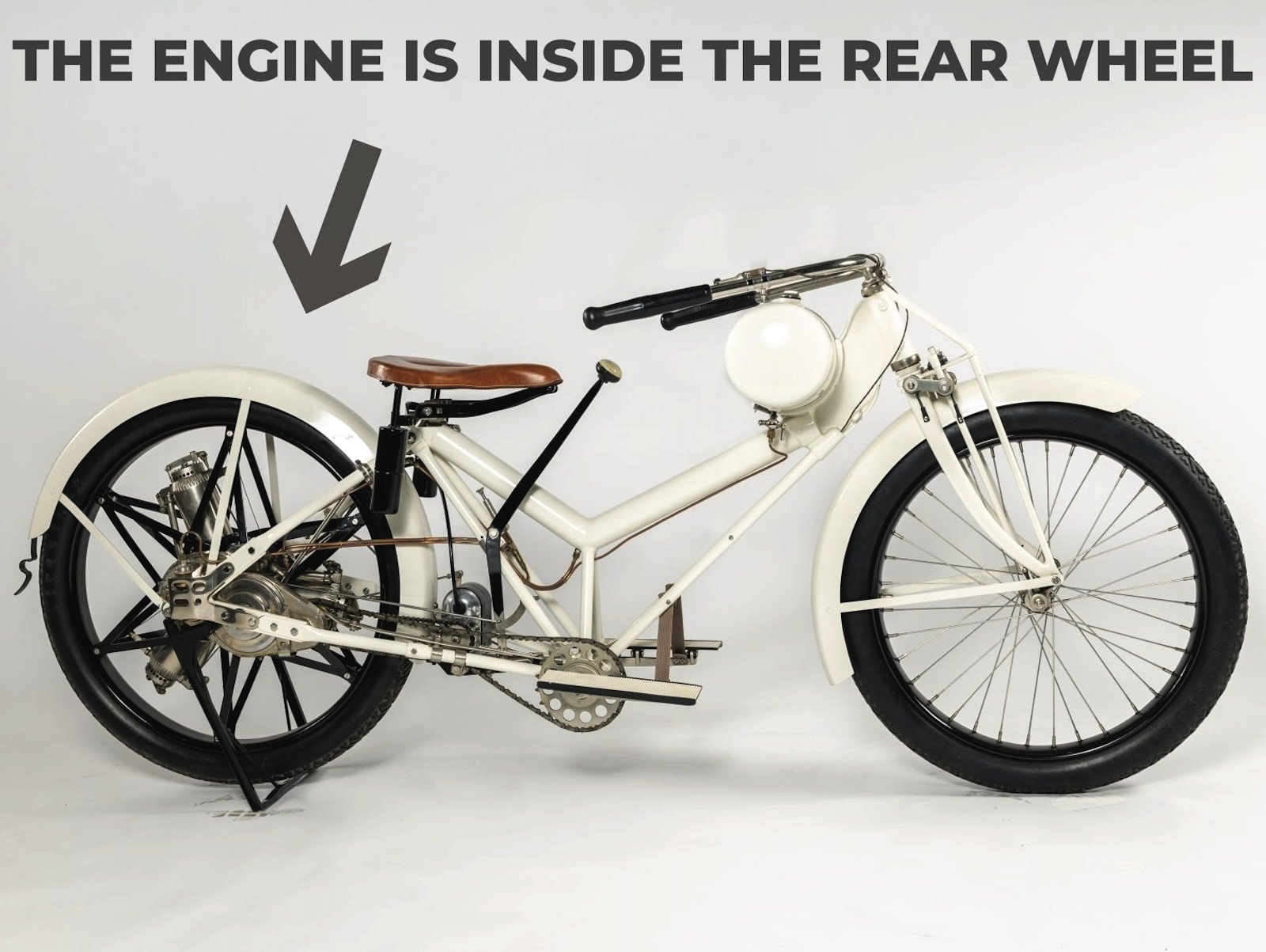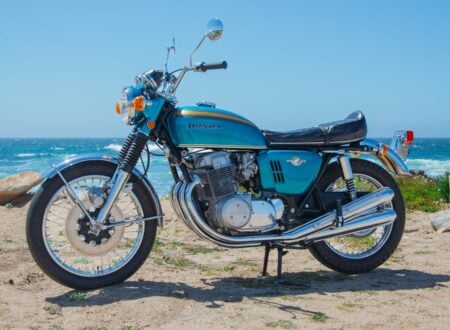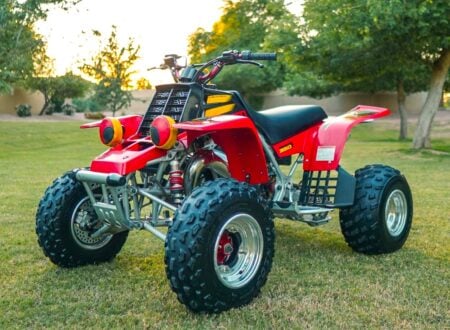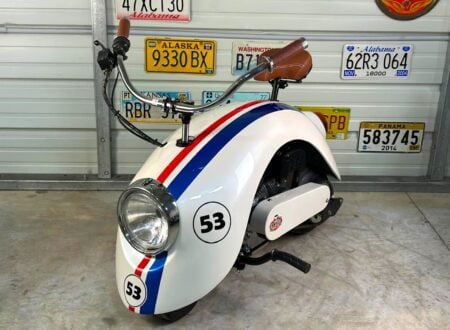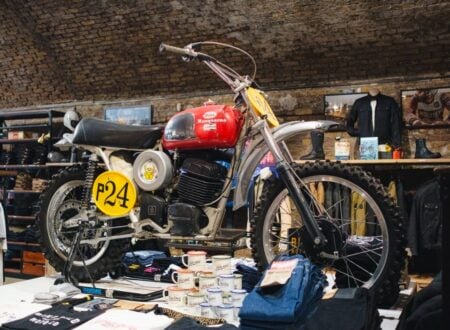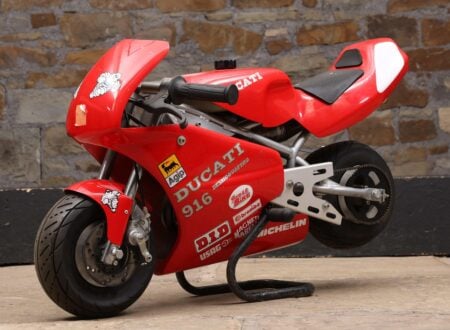This is one of just four examples of the 1915 Williams Clady motorcycle that were built, and this is the last known survivor. It’s powered by a rotary radial engine fitted inside the rear wheel, and it has a two-speed transmission.
The Williams Clady is an almost entirely forgotten avenue in the history of motorcycle evolution. The use of an aircraft engine inside the rear wheel is obviously not something that caught on, but the engine’s 873cc displacement would have given the bike a decent level of performance by the standards of the time.
Fast Facts – The Williams Clady Motorcycle
- This 1915 Williams Clady is a rare motorcycle, one of only four believed to have been made, and the last surviving example. It features an 873cc rotary radial engine fitted inside the rear wheel, producing 10 bhp, paired with a two-speed transmission.
- During the early 20th century, motorcycle innovation flourished with experimental designs, including aero-engine-powered models like the Williams Clady. Its rotary radial engine design, derived from early aircraft technology, showcases an interesting crossover between aviation and motorcycle engineering.
- The Clady’s engine, integrated into the rear wheel, spins along with the wheel. The motorcycle has a Bosch magneto ignition, a sprung saddle, a leading-link fork, and a cylindrical fuel tank mounted to the top tube of the frame.
- This unique motorcycle, offered at auction by Mecum in Las Vegas, is expected to attract significant interest due to its historical significance, rarity, and its unconventional design. It will be sold with no reserve on February 1st.
The Incredible Early Years Of The Motorcycle
In the early years of the motorcycle, from the late 1800s into the early 1900s, there were countless experiments in the development of the first commercially viable production motorcycles. Most of these early motorcycles were essentially bicycles with an engine attached, but some were more thoroughly engineered, and many of today’s most famous motorcycle manufacturers were established at this time, including Harley-Davidson, Indian, Triumph, Royal Enfield, Husqvarna, and Norton.
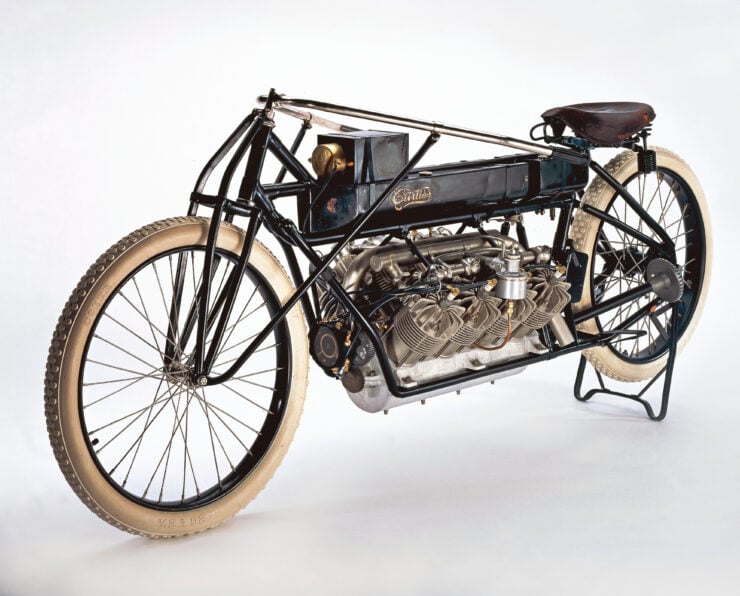

During this time of primordial two-wheeled experimentation there were many different engine types fitted to motorcycles. The most common was the single-cylinder, perhaps obviously, with both parallel twins and V-twins also seeing plenty of popularity for their compact dimensions.
Interestingly, the first flat-twin powered motorcycle was also developed around this time by Light Motors Ltd, it was named the Fée and had a displacement of 200cc.
When Light Motors went out of business it was taken over by Douglas Motorcycles who perfected the flat-twin design and were then copied years later by BMW, who switched the engine from a transverse placement to a longitudinal orientation – and they’re still building motorcycles in this way a century later.
This time in history was also when the first heavier-than-air, powered aircraft were taking to the skies, and these early planes needed compact, lightweight engines with a good power-to-weight ratio. As it happens, these are also important criteria for motorcycle engines, and as a result there were motorcycle engines being used in aircraft, and aircraft engines being used in motorcycles.
Perhaps the most famous of these aero-engined motorcycles is the 1907 Curtiss V-8 – a one-off motorcycle developed by Glenn Curtiss that he rode to a new world speed record at the Florida Speed Carnival at Ormond Beach in 1907, with a top recorded speed of 218 kph (136 mph).
Another aero-engined motorcycle was the Williams Clady, though it’s now remembered by only a few.
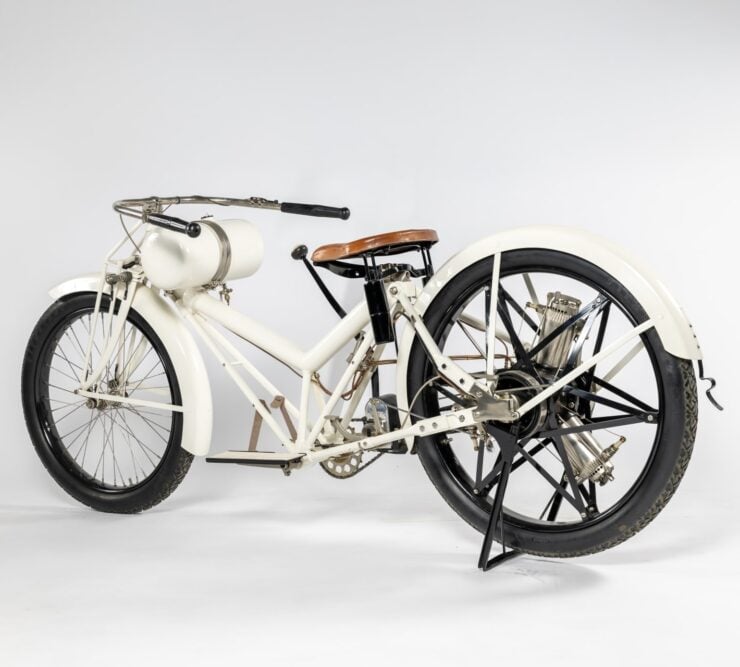

The 1915 Williams Clady Motorcycle
Little is known about the Williams Clady motorcycle of 1915, but the information that is available indicates that four prototypes were made and that just this single example now remains accounted for.
As the story goes, the rotary radial engine used in the Williams Clady was originally developed for use in early aircraft, including early helicopters, though this seems unlikely as it wouldn’t have been powerful enough for a helicopter.
At the time the use of rotary radial engines in aircraft was common, these are a type of radial engines that have the cylinders spin around the crankshaft, rather than remaining fixed in place as with standard radials as the crankshaft spins.
This engine design also lent itself to being fitted inside the wheel of a motorcycle, with the cylinders spinning at the same speed as the wheel itself. The difficulty is getting the fuel and oil to the engine, though this challenge was solved by the designers of the Williams Clady.
The engine has a displacement of 873cc and three cylinders, it produces 10 bhp, and it has a two-speed transmission. The fuel tank is fitted to the frame just behind the handlebars, and the oil tank is integrated into that thick frame top tube.
The Williams Clady has a footboard starter system with a chain drive, a Bosch magneto ignition, twist-grip throttle control, and a leading link front fork. It has a rigid rear end, as was commonplace at the time, with a sprung saddle to help keep the rider comfortable.
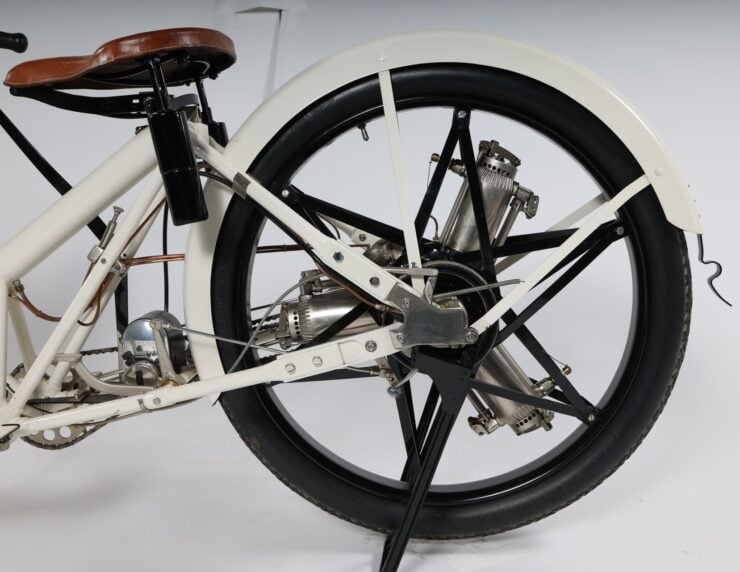

There can be little doubt that this is one of the most unusual motorcycles we’ve ever featured on Silodrome, and sadly we’ve not been able to find any videos of it running or being ridden – though if you do find one please let us know via our contact page.
The bike is now due to roll across the auction block with Mecum in Las Vegas on the 1st of February with no reserve. It’ll be interesting to see what it sells for, if you’d like to read more about it or register to bid you can visit the listing here.
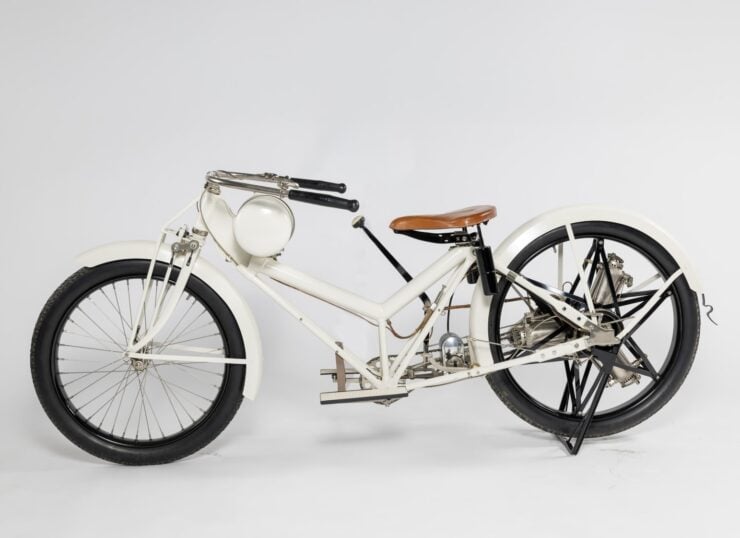
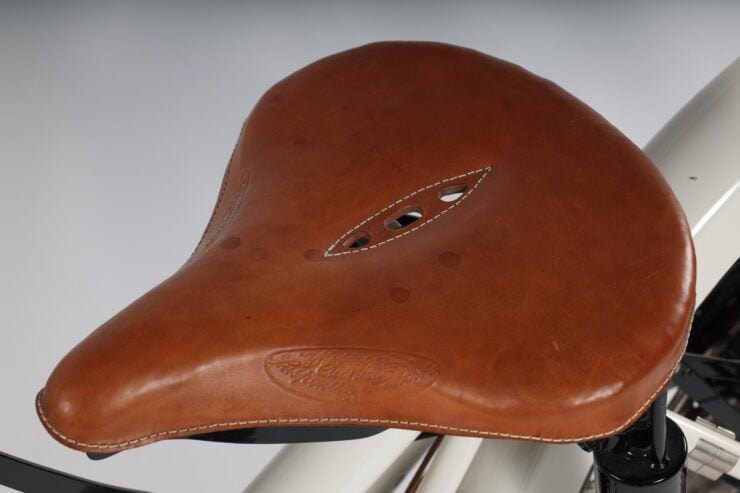
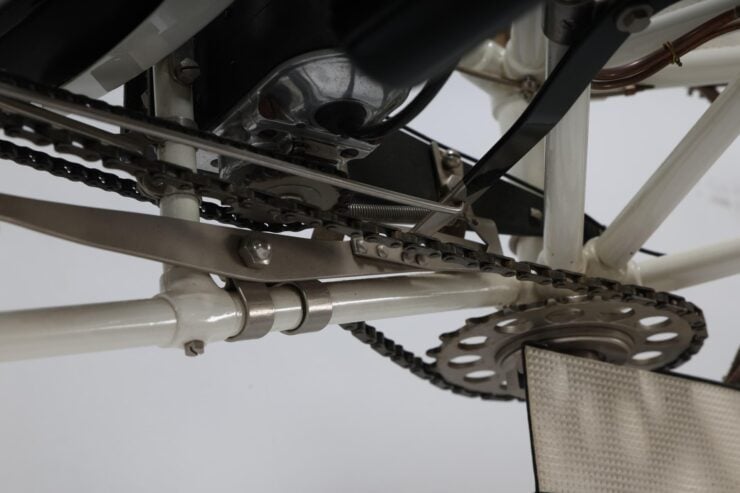
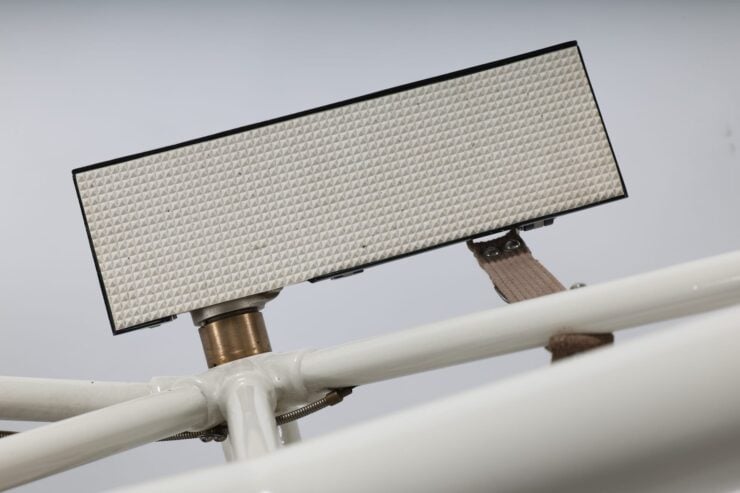
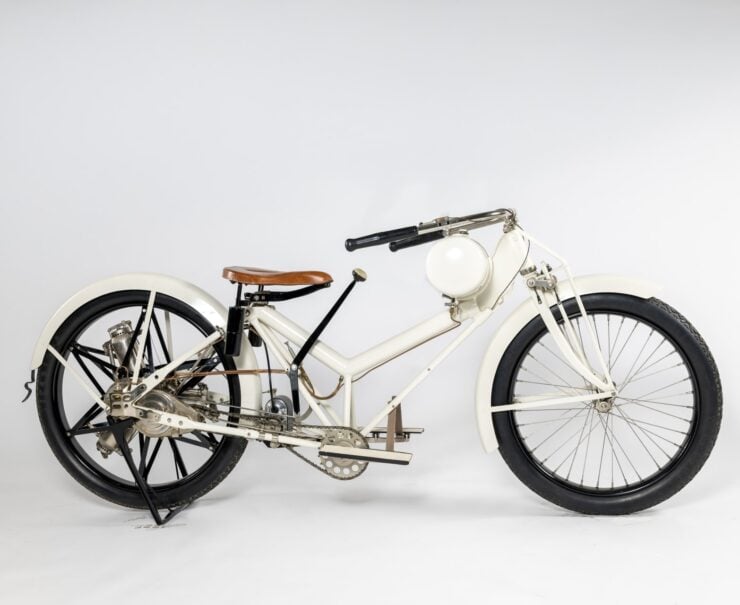
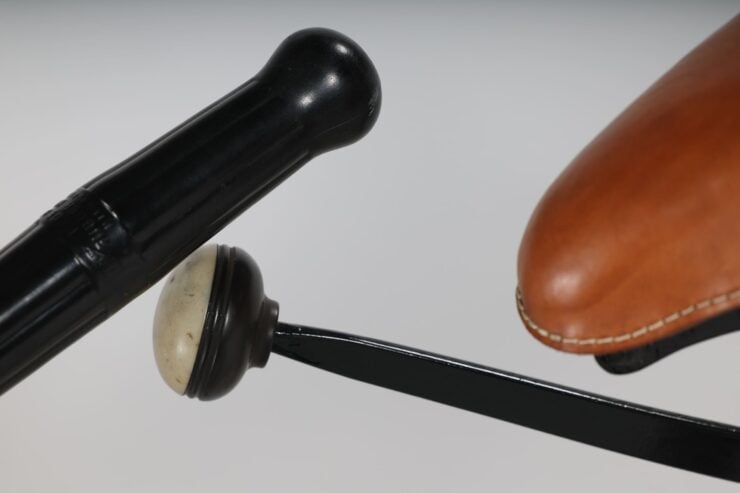


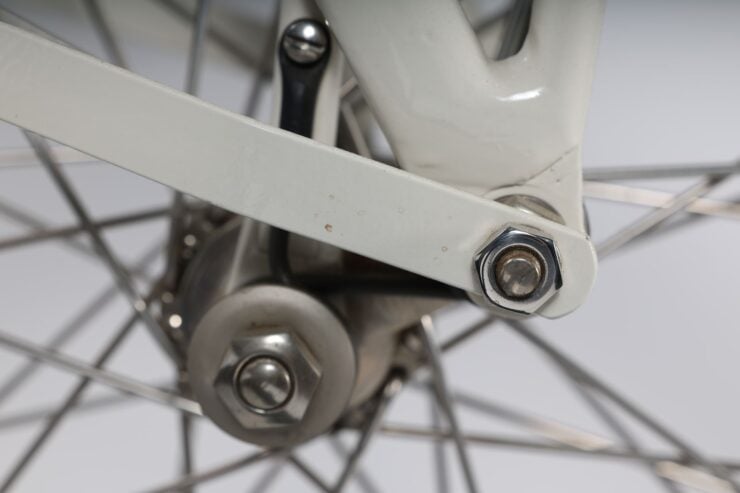
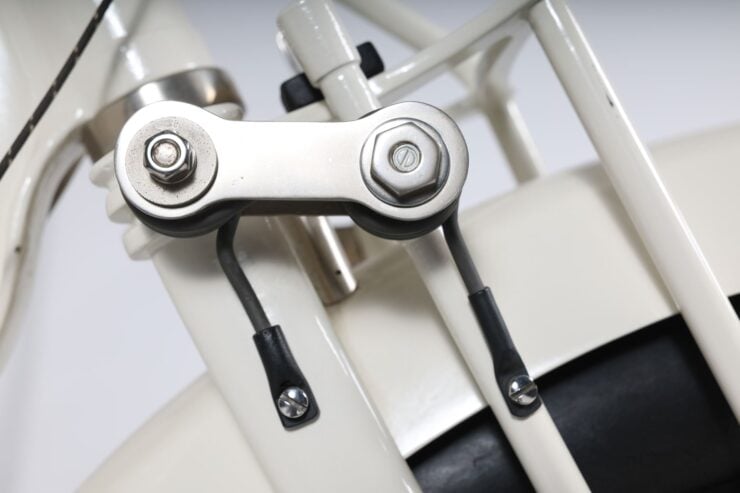
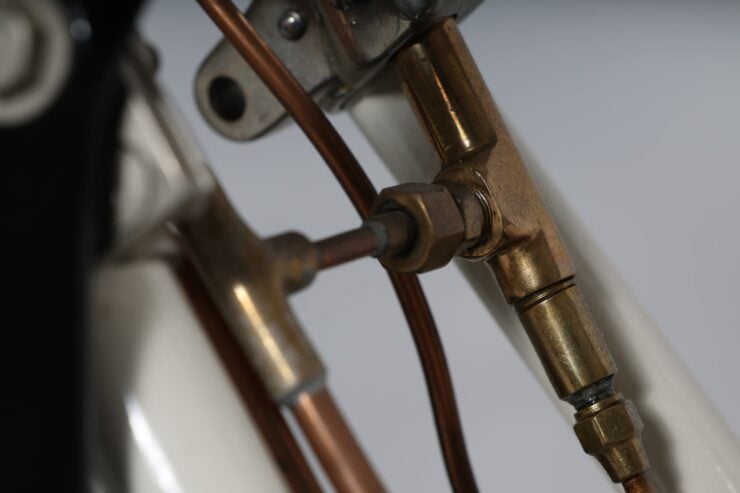
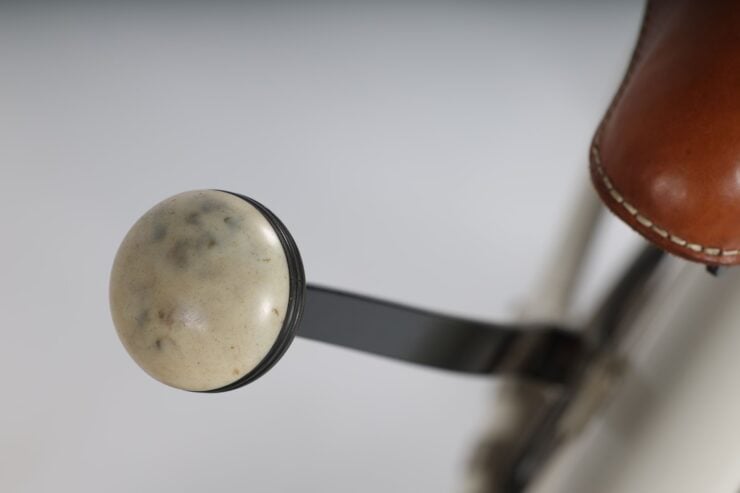
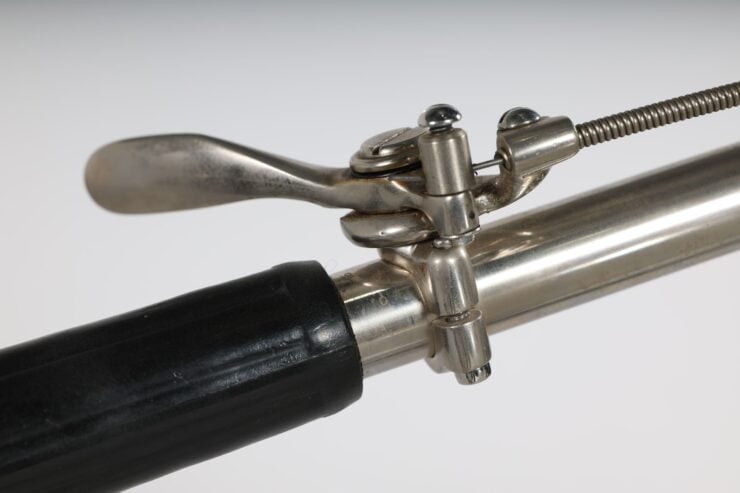
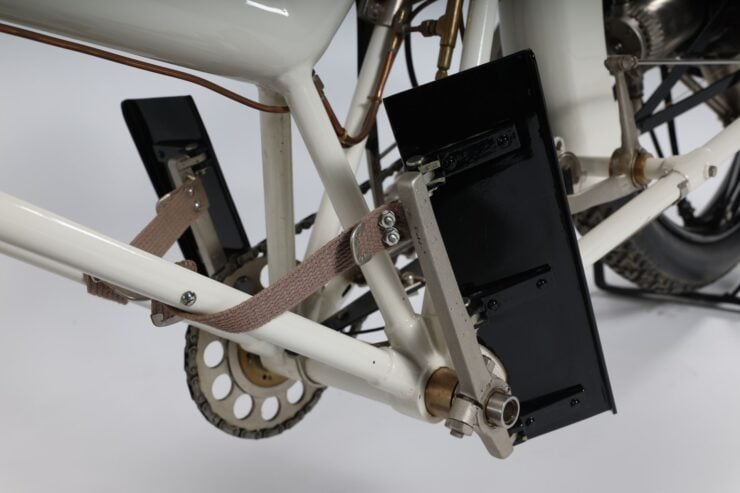
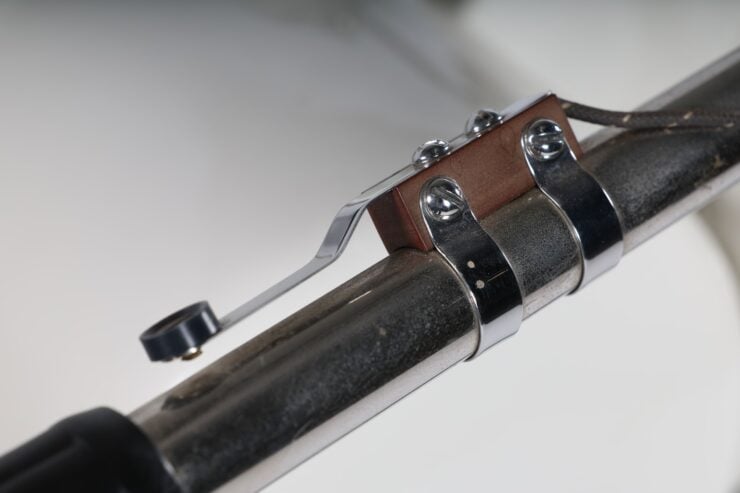
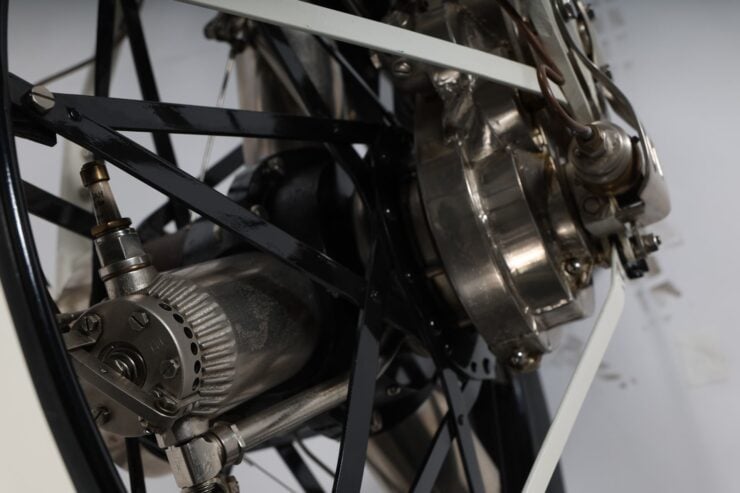
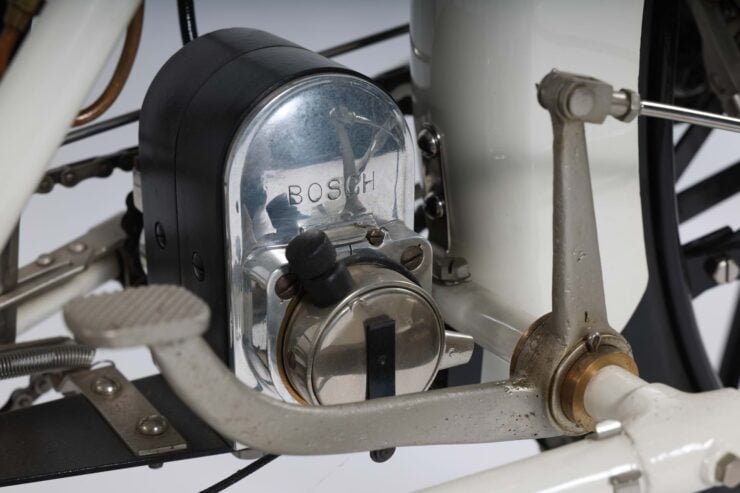
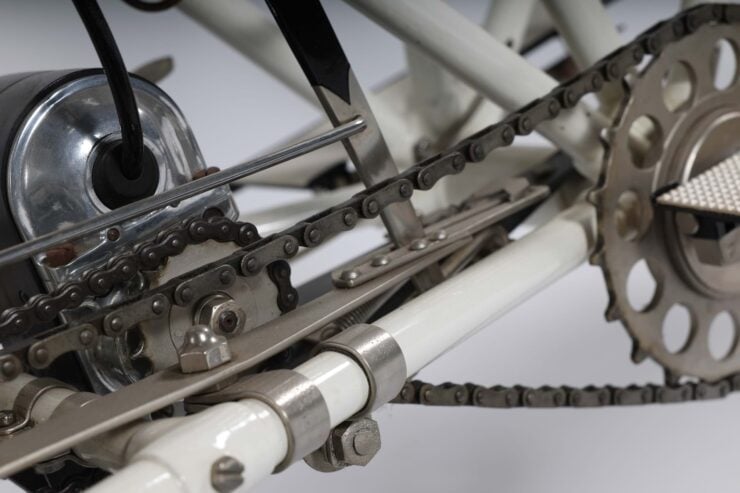
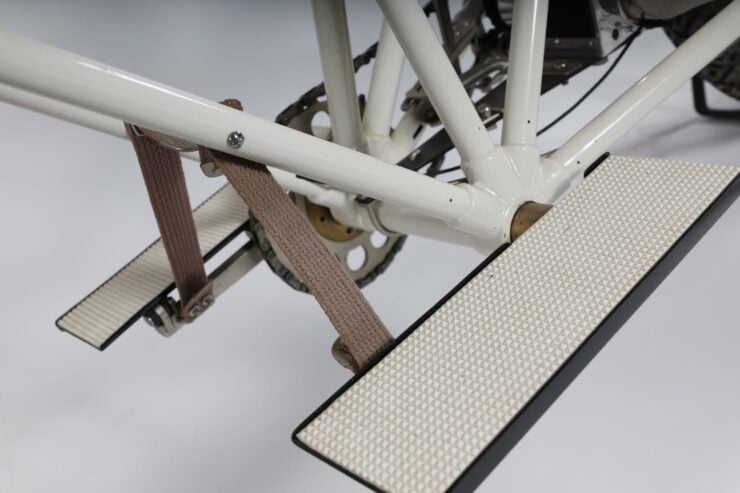
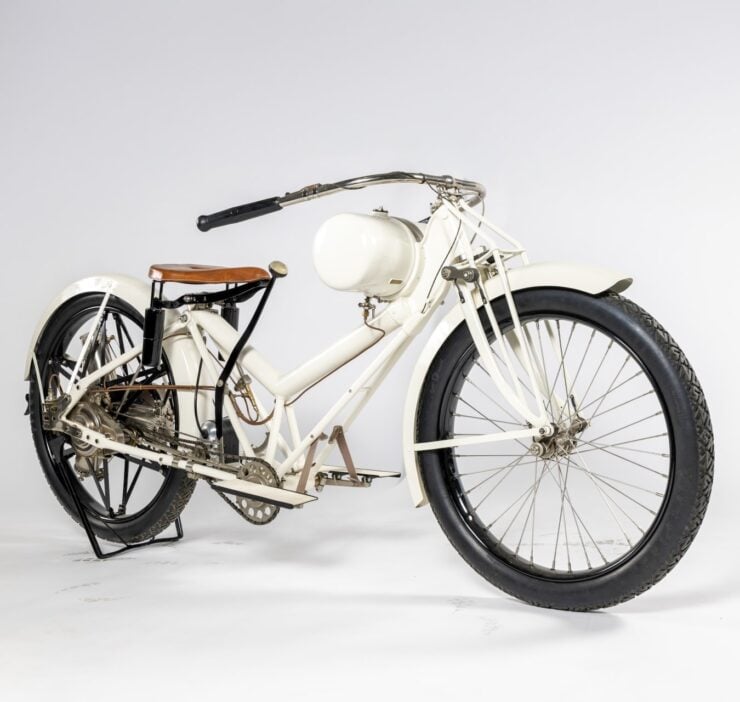
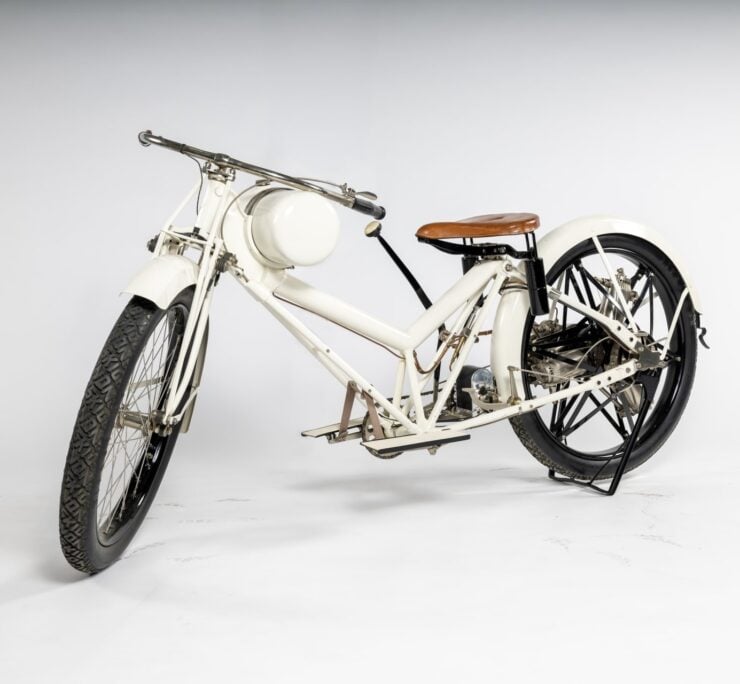
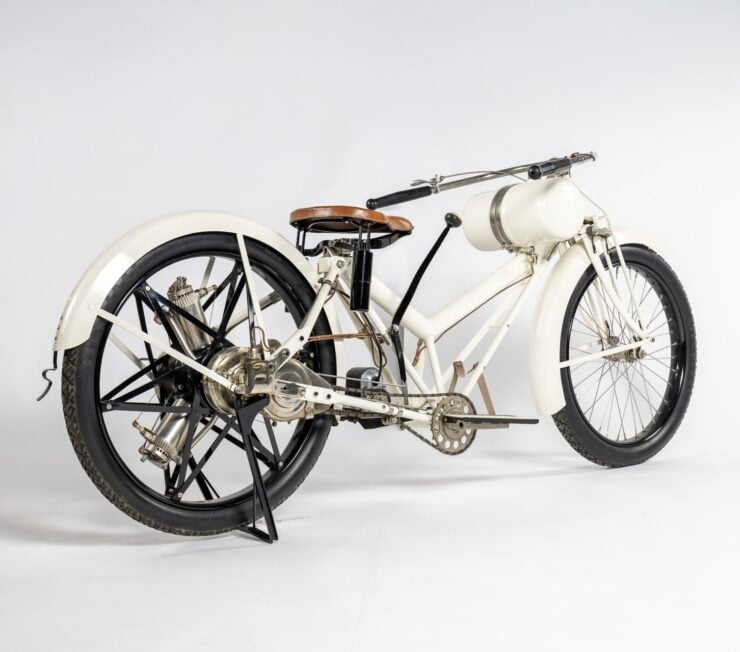
Images courtesy of Mecum

